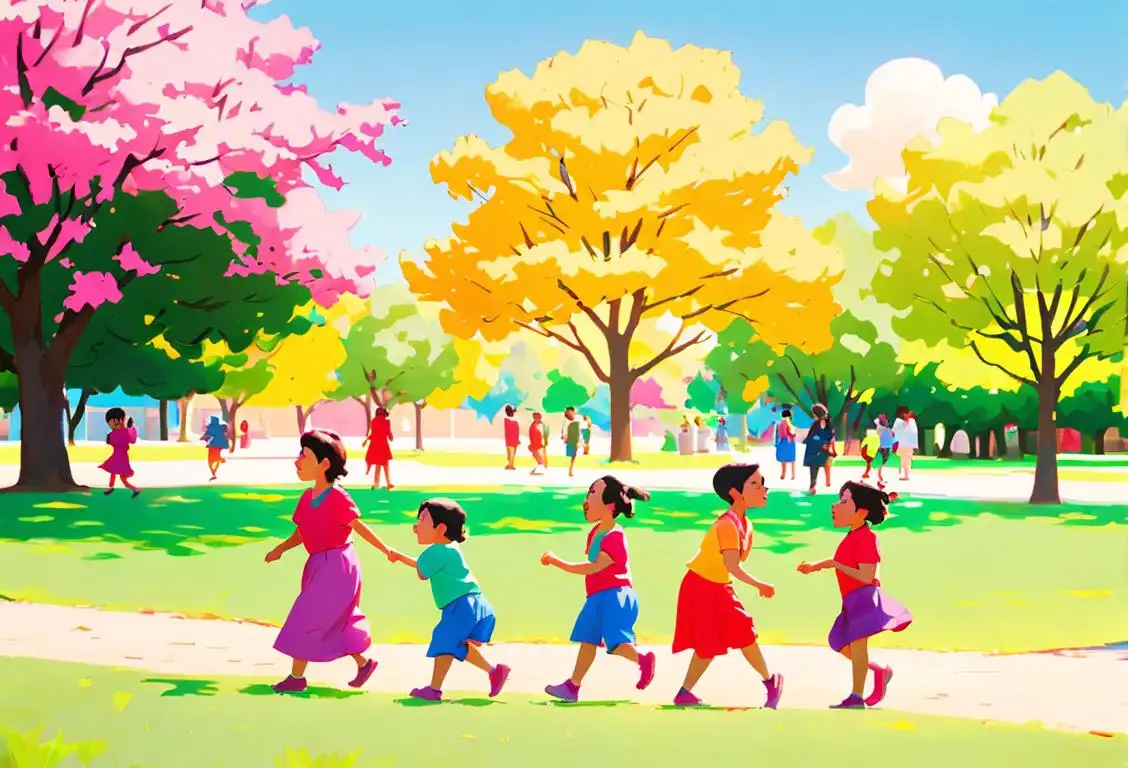National Conservation Day

Welcome to the intriguing world of National Conservation Day! Get ready to dive into the wonders of nature, quirky facts, and some tips to save our planet. So grab your eco-friendly beverage of choice and let's get started!
When is Conservation Day?
It's national conservation day on the 14th December.
The Origins of National Conservation Day
National Conservation Day is a celebration of our planet and a reminder to take care of Mother Nature. This special day has a rich history that dates back to the early days of the internet. It all started on December 14, 2015, when conservation enthusiasts took to the online world, flocking to social media platforms to raise awareness about the importance of environmental preservation.
What began as a grassroots movement quickly gained traction, with 124 mentions online in its inaugural year. People shared tips on sustainable living, posted breathtaking photos of natural landscapes, and organized community clean-up events. National Conservation Day became a platform to inspire and educate individuals around the globe.
Why Celebrate National Conservation Day?
Our planet is home to stunning biodiversity, from majestic rainforests to vast oceans teeming with life. Unfortunately, due to human activities, these natural wonders are under threat. National Conservation Day aims to shed light on these critical issues and encourages people to take action.
Whether it's reducing waste, conserving energy, or supporting environmental organizations, there are countless ways to make a positive impact. By celebrating National Conservation Day, we can come together as a global community to protect and preserve the incredible gift of nature we've been entrusted with.
Did You Know?
In honor of National Conservation Day, here's a fun fact for you: Did you know that recycling one aluminum can saves enough energy to power a television for three hours? It's a small action with a big impact!
History behind the term 'Conservation'
1894
The Birth of Conservation
The term 'conservation' was first popularized by the American naturalist and writer, Gifford Pinchot, in 1894. Pinchot was a leading figure in the early conservation movement in the United States and served as the first Chief of the United States Forest Service. He believed in the sustainable use and management of natural resources, advocating for the responsible stewardship of forests and other natural areas.
1902
National Conservation Commission
In 1902, under the administration of President Theodore Roosevelt, the National Conservation Commission was established. This commission aimed to study the natural resources of the United States and propose policies and strategies for their conservation. Led by Pinchot, the commission highlighted the importance of conserving forests, water resources, and wildlife for the benefit of future generations. It played a crucial role in raising public awareness about conservation issues.
1916
Founding of the National Park Service
The year 1916 marked a significant milestone in conservation with the establishment of the National Park Service in the United States. This federal agency was created with the goal of preserving and protecting the country's national parks and monuments. Led by Stephen Mather, the first Director of the National Park Service, efforts were made to conserve not only the natural beauty of these areas but also their historical and cultural significance. National parks became popular destinations for tourism, further fostering a sense of appreciation for the importance of conservation.
1948
International Union for Conservation of Nature
In 1948, the International Union for Conservation of Nature (IUCN) was founded. The IUCN is a global organization that works towards the preservation and sustainable use of natural resources through scientific research, conservation projects, and policy advocacy. It serves as a platform for governments, non-governmental organizations, and scientists to collaborate and address pressing environmental challenges. The IUCN has played a crucial role in shaping international conservation efforts and promoting the concept of conservation worldwide.
1972
United Nations Conference on the Human Environment
The United Nations Conference on the Human Environment, held in Stockholm, Sweden, in 1972, marked an important turning point in global conservation efforts. The conference brought together representatives from various nations to discuss environmental issues and establish environmental principles for sustainable development. It led to the creation of the United Nations Environment Programme (UNEP) and the adoption of the Stockholm Declaration, which emphasized the need for environmental conservation and resource management. This event helped elevate conservation to a global priority.
2000
Millennium Development Goals
The new millennium brought further recognition of the importance of conservation. In the year 2000, the United Nations Millennium Summit took place, resulting in the adoption of the Millennium Development Goals (MDGs). These goals encompassed a broad range of issues, including environmental sustainability. Conservation became intertwined with efforts to alleviate poverty, improve health, and achieve socio-economic development. The MDGs served as a roadmap for countries to address conservation within a broader framework of sustainable development.
2015
United Nations Sustainable Development Goals
Building upon the Millennium Development Goals, the United Nations adopted the Sustainable Development Goals (SDGs) in 2015. The SDGs comprise a set of 17 interconnected goals aimed at achieving a more sustainable and equitable world by 2030. Conservation is explicitly highlighted within Goal 15: Life on Land, which focuses on protecting terrestrial ecosystems, halting biodiversity loss, and promoting sustainable land use. The SDGs provide a global framework for countries, organizations, and individuals to work together towards a more sustainable future.
Did you know?
Did you know that recycling one aluminum can saves enough energy to power a television for three hours?Tagged
awareness nsfw funFirst identified
24th September 2015Most mentioned on
14th December 2015Total mentions
124Other days
Children Day
Nightmare Just Day
Intelligence Richard Grenell Has Declassified A Mysterious Inauguration Day
Happiness Day
Awareness Day
Kisses Day
Opposite Day
One Day
Stormy Daniels Day
These Day









